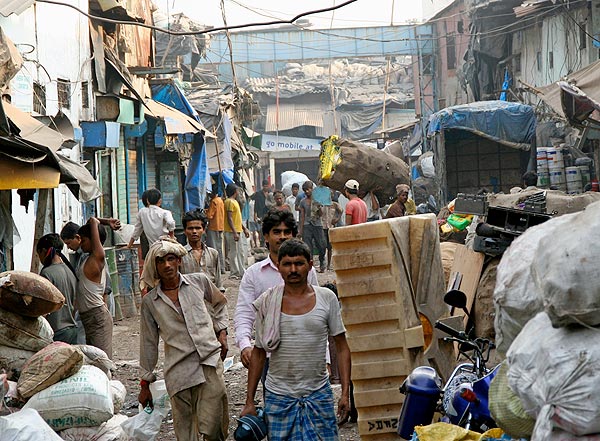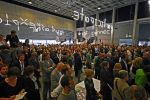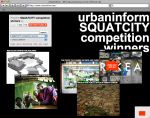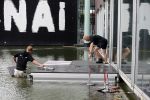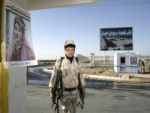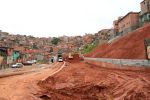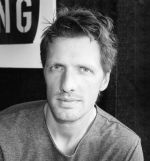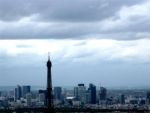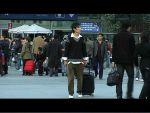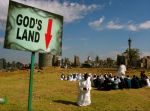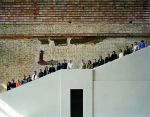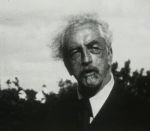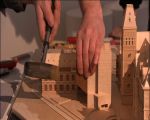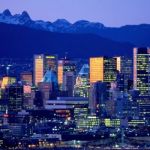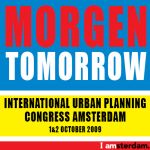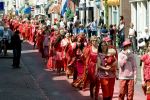Sa 07 Mar 09
Open City Symposium in Zurich
Results
Held in the Semper Aula of the ETH Center in Zurich, the conference focused on the global forces that are transforming our cities, and considered the challenges facing architects, urbanists, and other disciplines in managing their impact.
Meerpaal
In an introductory section on Open City, curator Kees Christiaanse described the “Meerpaal” – a public building that opened in a 1965 in the Dutch New Town of Dronten. Consisting of one large open space accommodating diverse activities, the Meerpaal became a venue for television shows and a symbol of the “Make-able Society,” characterized by openness and tolerance.
As Christiaanse went on to describe, the urbanistic translation of this “Make-able Society” saw the Netherlands as one large space in which the multi-cultural society could unfold in openness and tolerance. But, unfortunately, Christiaanse added, “this beautiful but naive vision did not come true! Instead, it led to the polarization of the urban environment – a landscape of fragments….”
Christaanse asked symposium participants to examine the role that architects and urbanists could play in addressing the physical and social segregation of urban structures, and whether Open City is still a legitimate concept.
After the Introductory section on Open City by Christiaanse, co-curator Tim Rieniets, and historian Angelus Eisinger, the day was divided into four thematic blocks: 1) Spaces of Migration, 2) Transational Spaces, 3) Inequality, and 4) Urban Islands.
Spaces of Migration
Spaces of Migration addressed the increasing importance of migration, in both enforced and voluntary forms, as a constituent of contemporary urban life. More and more people are moving to and commute between cities — be they migrants, refugees, asylum seekers, guest workers, tourists, or business travelers. This increase of migration challenges social patterns and cultural layouts of cities, playing an ever-stronger role in shaping politics and society. This block featured a talk on Architecture/Migrancy by Professor Dr. Stephen Cairns of the University of Edinburgh and Dr. Michael Zinganel of Graz, followed by reflections by Daliana Suryawinata and Philipp Misselwitz.
Transnational Spaces
Transnational Spaces dealt with the new forms of socio-spatial organization that transcend the limits of physical urban space. Because of international migration and communication, urban life, once tied to local conditions, is more and more enmeshed with global networks of exchange and is infused by cultural and economic influences that were once out of reach. Arnold Reijndorp, Professor of Urban Geographies at the University of Amsterdam; Regina Bittner, Cultural Scientist at the Bauhaus Dessau Foundation, Michelle Provoost of Crimson Architectural Historians, and Jörg Stollman, professor at TU Berlin revealed how urban spaces are being confronted with realities for which they were not conceived. On the one hand, processes of transnational urbanism allow cultural, economic, and education empowerment, and for new social practices. On the other, this socio-spatial organization tends to drift away from the conditions of urban space, potentially generating new forms of segregation.
Inequality
Inequality – the theme of the third section – is considered one of the most significant urban problems of the next century. On the one hand urban space has been stigmatized as the reason for social decline; on the other, it has been suspected as a means of deliberate marginalization. Elisabetha Franca, Director of the Secretaria de Habitacao Social in Sao Paulo discussed the “aesthetic of belonging” in Sao Paolo; Orhan Esen, Urban Designer in Istanbul, spoke on issues of poverty and exclusion in relation to migration in Istanbul; Bart Goldhoorn, Founder and director of Project Russia, examined the condition of “too much equality” in the Post-Soviet city, and Tobias Armborst, Partner at Interboro Architects and Urban Designers in the USA, explained how “tools of exclusion” and segregation are applied in gated communities in the USA.
Urban Islands
The final block, Urban Islands discussed contemporary cities not as “fluid spaces,” as is common in globalization discourse, but, on the contrary, as spaces of segregation – urban archipelagos; socially and spatially disconnected islands. In his talk “House of Cards,” ETH Professor Marc Angelil explored the devastating effect of the foreclosure crisis on suburban communities and foundations of the American Dream. Gerald Frug, Louis D. Brandeis Professor at the Harvard Law School, asked how we can generate openness through legal rules, and offered suggestions on what a “law of openness” might include. For whom are we building an Open City, and who is equipped to do it? Frug insisted that this was not a job for architects alone, but an interdisciplinary undertaking. Dan D’Oca of Interboro and Can Altay presented additional insights into the ways that urban islands are produced, maintain, and potentially transformed in the USA and Istanbul.
Incompleteness
Saskia Sassen’s keynote speech concluded the day, but left it, intentionally, incomplete. Taking a stance of “incompleteness,” Sassen stated that “formalized systems can reveal themselves to be incomplete in times of transformation.” Her talk addressed the themes of “new fragmentations”, “density,” “finance,” and “Cities and New Wars,” the title of her next book, which questions whether cities are losing the capacity they one had to transform conflict into the “civic.” What, she asks, are the new challenges that are bigger than our differences?
Many of the symposium participants will contribute to the book Open City: Designing Coexistence to be published in September by SUN Publishers, Amsterdam.
For the full program go to the open city website of the ETH Zurich.
